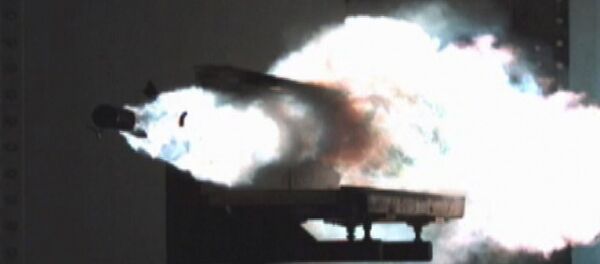Turkey announced a successful test of its new electromagnetic weapon — referred to as ‘railgun' — which shoots metallic projectiles at hypersonic speeds.
Turkey is the fifth country in the world to develop the weapon, after Russia, the US, China and India.
The weapon has been named "Tübitak Sapan," or "Tübitak Slingshot," after Turkey's Scientific and Technological Research Council (Tübitak). Weapons similar to Sapan are capable of firing a projectile as far as 100 km, at speeds of up to 3,500 meters per second (12,600 km/h).
Railgun technology has certain upsides; the hypervelocity round is very difficult to intercept, and, since it has no electronics inside, it is immune to jamming and electronic warfare. In one live fire tests, a railgun successfully pierced a one meter-thick reinforced concrete bunker.
#Turkey's 1st railgun #SAPAN: 10 times faster than soundhttps://t.co/FQh09HkSzL pic.twitter.com/DtcFeMGSy2
— Yeni Şafak English (@yenisafakEN) 11 ноября 2016 г.
The primary downside of the weapon is its extremely high energy consumption. In order to fire at 10 rounds per minute (one shot every six seconds), a railgun requires some 20 megawatts of energy, the output of a power plant used to light and heat some 250 small homes.
First tested in 2014, Turkey's Sapan is a byproduct of Tübitak's research into inertial confinement fusion technology, also known as controllable thermonuclear energy, Business Times reports.
Aselsan'ın geliştirdiği Railgun'ın TÜBİTAK'ın geliştirdiği Sapan'dan farklı olduğu düşünülüyor.Bizimde düşünceniz bu yönde. pic.twitter.com/zeAll8pEwv
— TAH Savunma (@TAHSAVUNMA) 14 апреля 2017 г.
Turkey reportedly plans to build eight TF-2000 class frigates, equipping them with full-scale combat-ready versions of the Sapan railgun, according to the newspaper.
Only five countries have working railgun technology: Russia, the US, China, India and Turkey. While the US considers railgun to primarily be a weapon, Russian scientists have more recently examined peaceful applications, such as delivering cargo into space, according to 2017 Zvezda report.





